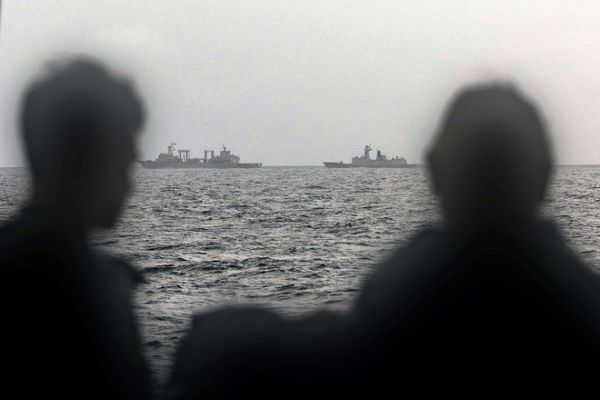As a changing climate impacts marine systems, seafood operators are recasting how and what they're farming, to feed an ever-growing world.
About half of the marine species found in Australian waters have undergone large distribution changes in the past two decades because of the changing climate, a major agricultural conference in Canberra was told this month.
And while stocks of gemfish have declined to as low as five per cent, other fish, including snapper in Tasmania, are on the rise, according to Patrick Hone who heads up Australia's Fisheries Research and Development Corporation.
"We know that gemfish is not recovering, climate change is suppressing its recovery," he told AAP.
"Even though we've reduced the fishing, it is not recovering because under this new alternate temperature regime, it just won't recover."
The fish scientist has worked in the industry for more than two decades and says seafood operators, including fish farmers, have to tackle climate change head-on.
"The future farm is probably going to look at how they use onshore, their in-shore environment and offshore, to basically build a more resilient model," he added.
A new record global sea surface temperature of 21.17C, averaged out across the entire ocean barring the poles, was recorded last week, the Australian Bureau of Agricultural and Resource Economics conference heard.
Marine ecologist Greta Pecl says the new average temperature has left climate scientists "flabbergasted."
"It's not just that it's warmer than the ocean is estimated to have been over the last 100,000 years, or more, it's the massive recent increase in that average global temperature," Prof Pecl says.
The professor of climate change at the Institute for Marine and Antarctic Studies, based at the University of Tasmania, was a lead author on the most recent report from the United Nations' Intergovernmental Panel on Climate Change and says the development means seafood operators are in "unchartered territory."
"Fisheries populations in Australia will (continue to be) severely challenged by climate change ... The whole composition and the structure and function of ecosystems have been completely turned on their head," Prof Pecl told AAP.
"(Fish species) are having major changes in distribution, in times of spawning, in areas they spawn, in susceptibility to disease and changes in size."
The industry is trying to adapt to the changes, as they work to satisfy the world's growing appetite for seafood.
"If we're going to feed a growing Asian market for seafood, we're going to have to fish farm and that means we're going to need new and novel techniques to do that at scale," Mr Hone noted.
As temperature hotspots see some areas heat faster than others, researchers are exploring further out to sea.
Data shows the east coast of Tasmania is heating up at around four times the global average.
Chien Ming Wang and his team from the University of Queensland have been working alongside industry operators to develop a deep sea fish pen.

"There's a lot of traction to move near-shore farms offshore because of limited sea space, contested users, and the fact that it's stressed the ecosystem," Professor Wang said.
The SeaFisher technology can be submerged during storm activity.
The pen is estimated to cost around $6 million and modelling shows it could grow ten times the fish produced in other offshore pens on the market, some of which can blow out in cost to $180 million, according to Prof Wang.
The expansion of fish farming into deeper ocean areas is just one area being explored.

Back on land, and Mat Goddard runs a fish technology start-up called the Aquacultr Group.
The company is working to scale up a recirculated aquaculture system, or RAS, that farms fish on land.
With a focus on barramundi, the company is working to establish a series of pilot sites.
"We see a future where we have 100 plus of these farms in Australia, producing exceptional quality fish and in a transparent way," Mr Goddard said.
The land-based modular fish production system was featured at Agrifutures Australia's Evoke Ag conference, which showcased advancement in agriculture technology, in Perth in February.
"Aquacultr Group's solutions directly address some of the critical challenges facing the seafood industry, such as overfishing, ecological impacts, and unsustainable aquaculture practices," Agrifutures general manager of global innovation networks Hariett Mellish said.
Mr Goddard came across the technology during a visit to a fish farm at Port Stephens in NSW.

"We can farm in a fairly small land footprint, and it can be integrated into existing agricultural operations as a diversification opportunity," Mr Goddard said.
The former environmental scientist, who has a passion for food, believes his system will relieve a pending "food crunch".
"We've got a system that is able to be scaled," he adds.
"There's a lot of energy in Europe at the moment to try and bring RAS systems as the future of seafood."
RAS are already being used by some of Australia's big seafood operators, like Huon Aquaculture and Tassal.
It's all part of the bigger seafood picture, Mr Hone said.
"We're going to have to keep finding new systems ... There's not just one, there will be a suite of technologies," the fisheries research head added.
Fisdh T







